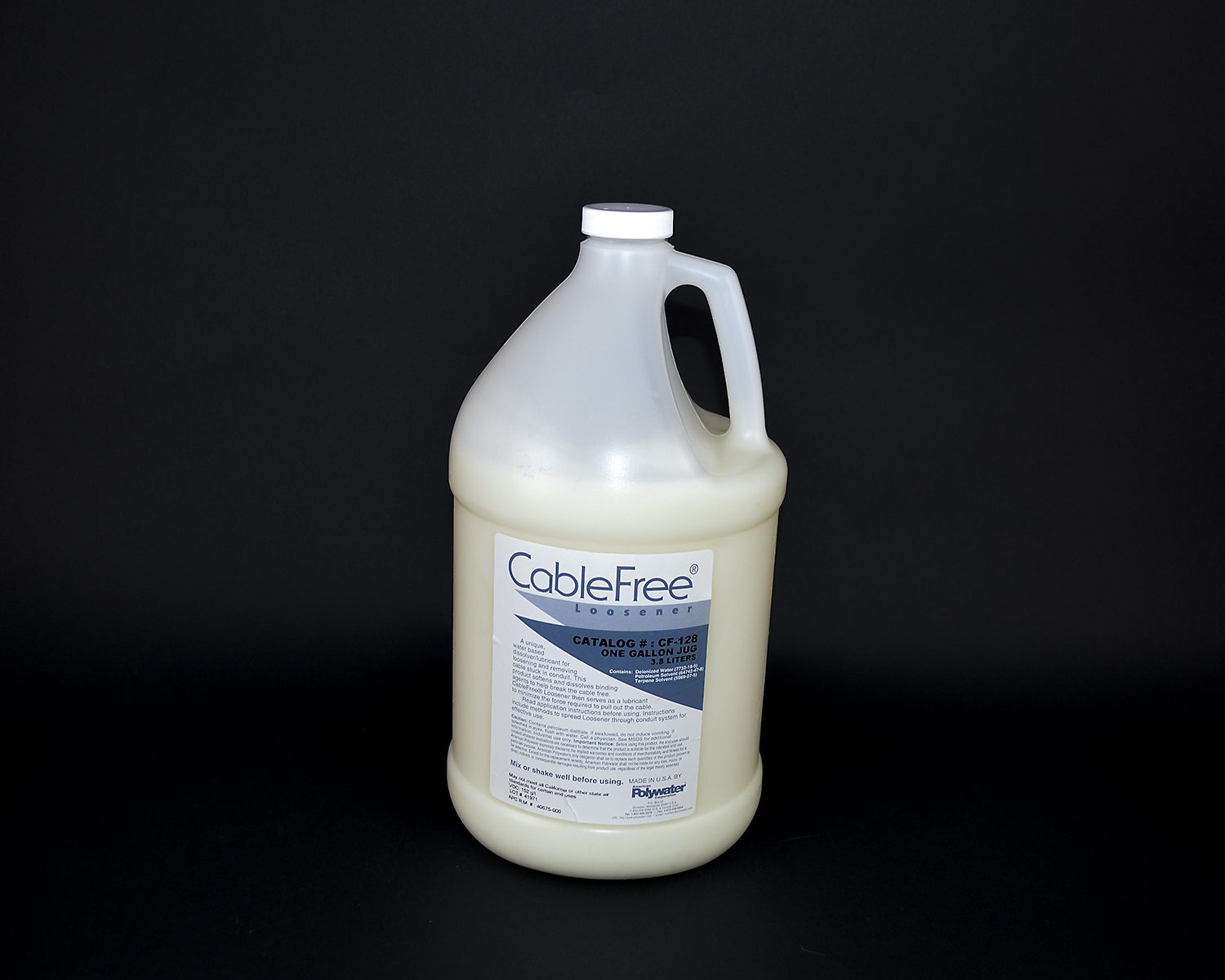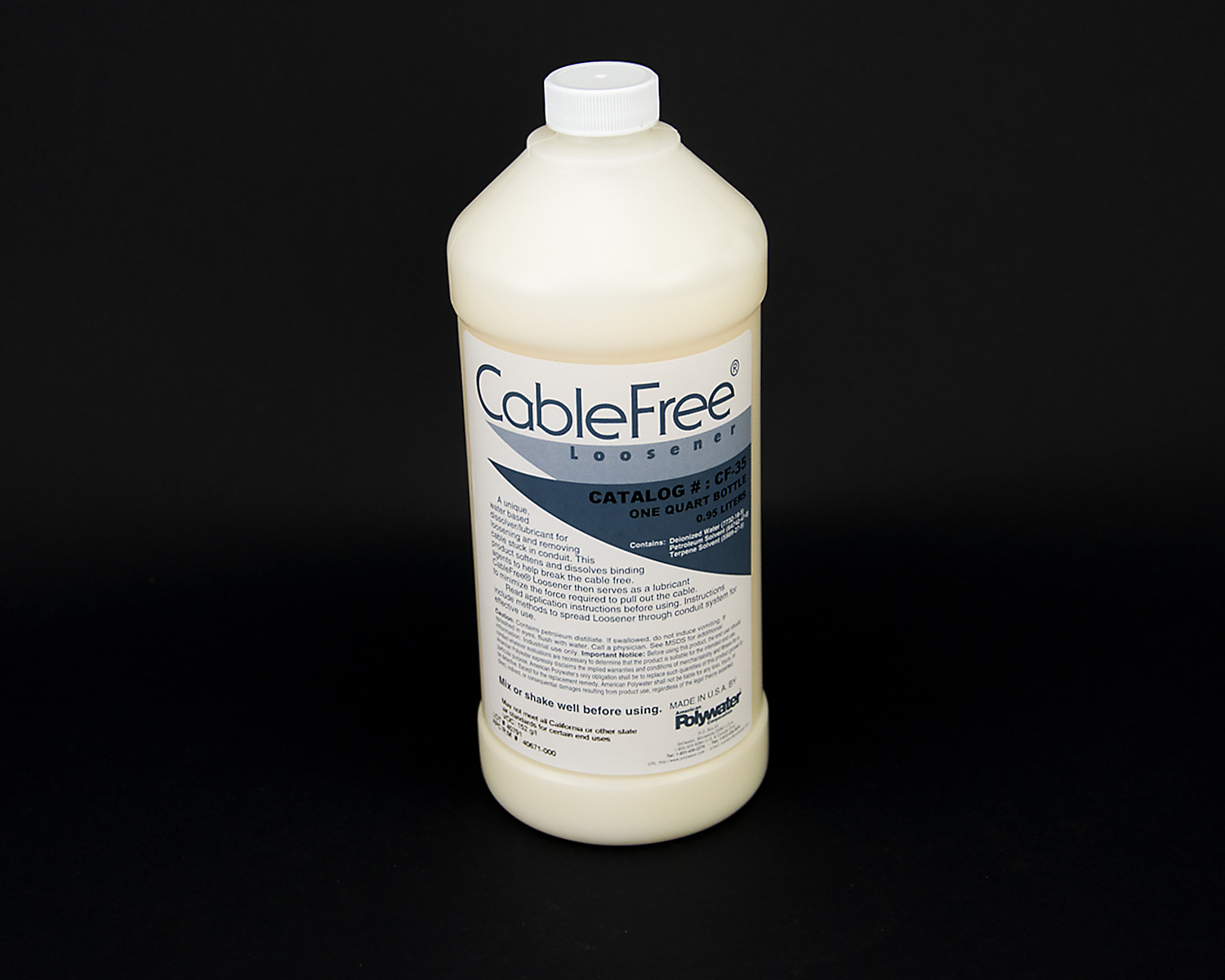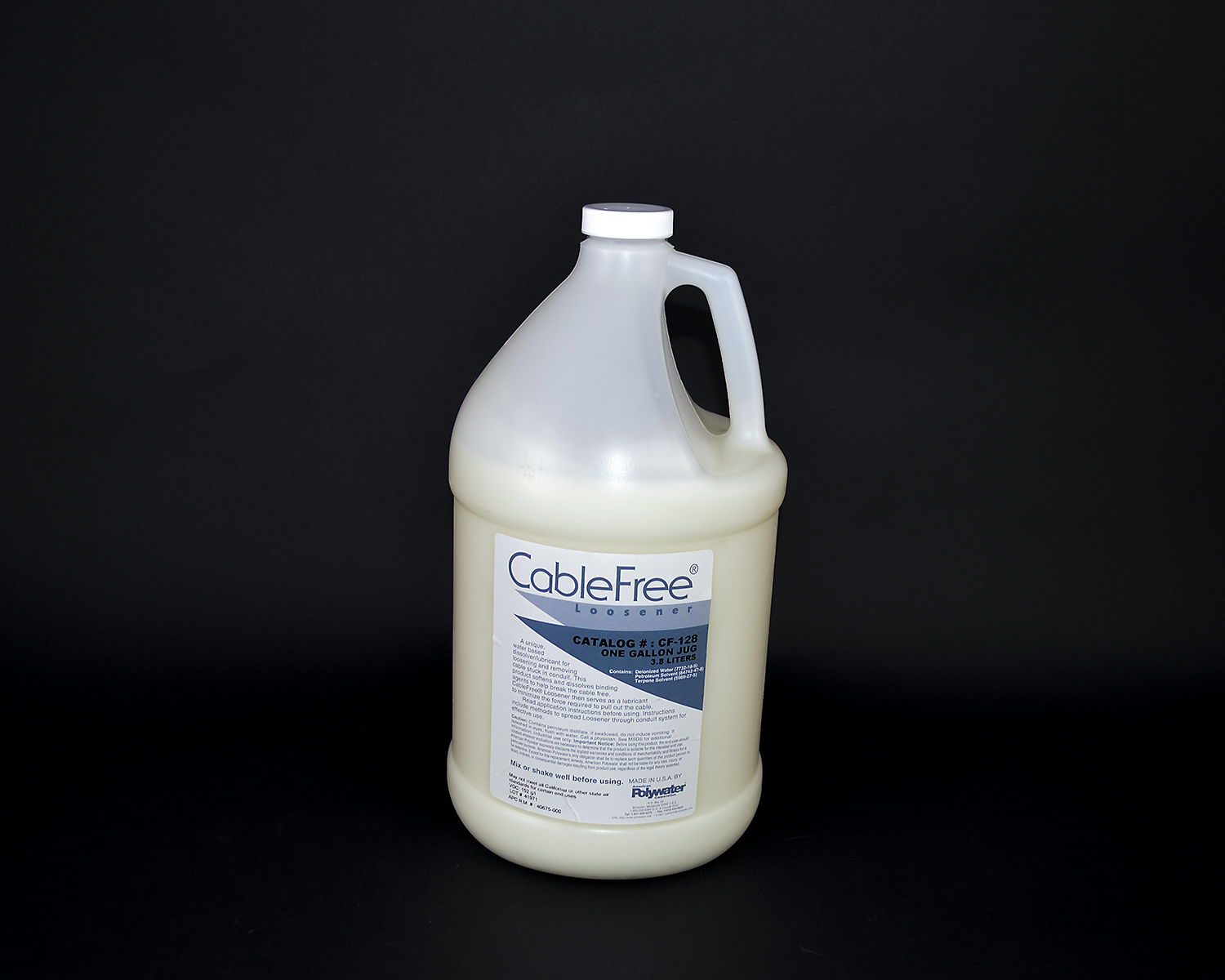| |
|||||||||
| |
|
|
|
|
|
|
|
||
| Home | About | Literature | Site Map | MSDS | Contact | Engineers | Shows | Links | Samples | RFQ | Catalog Numbers |
CableFree® LoosenerA Revolutionary |
 |
CableFree® Loosener is designed to loosen and remove cables that are held in conduits by wax, rust, dirt, soap, or other adhesive residues. CableFree® Loosener will dissolve a great variety of binding agents; but because of the many causes of "stuck" cable, 100% success cannot be guaranteed. Nevertheless, CableFree® can be extraordinarliy helpful in meeting the NEC 2002 Code for Removal of Abandoned Cables. The definition of abandoned cable, as found in paragraphs 800.2 and 770.2 of the NEC 2002 Book, states "... Installed communications cable that is not terminated at both ends at a connector or other equipment and not identified "For Future Use" with a tag." Additionally, paragraph 800.52(1) states that "abandoned cables in vertical runs shall not be permitted to remain." Article 770 states the same requirements for optical fiber risers and horizontal cables. These requirements apply to cables in duct, as well as in plenum. All cabling end users should understand the implications of not complying with these new NEC Codes. They are based on safety of the employees and rescue personnel. As the code is enforced across the country, building owners and tenants may face huge costs to remove and dispose of abandoned cables--as well as liability for failure to comply.
CableFree® is an excellent and inexpensive tool to help mitigate these costs. The potential dollar savings from a successful removal of stuck cable(s) is very high. Even a partial success rate often makes the investment of time and effort worthwhile. The end-user must make this determination, however, based on the potential economic advantage of any particular cable removal.
Limitations: The use of CableFree® Loosener is not intended to allow re-use of the cable being removed. The cable(s) being removed may be ruined by the solvent nature of the product and the high pulling force inherent in the process.
Also, the removal of a single cable from a group of cables is usually not possible. All cables in a conduit should be removed in bulk, and new cables installed.
CableFree® Loosener is a white, water-based, general-purpose dissolver/lubricant. It is a thick, pourable liquid for convenient loading into conduit. It dissolves waxes, bitumen, soil deposits, and lifts rust. It also provides a lubricating film to ease cable removal once the cable has broken free.
Additional equipment required depends on the type of job.
As a rule of thumb, 1 quart of CableFree® Loosener should be used for every 50 feet of 1" conduit (1 liter per 15m of 2.5cm conduit). For larger conduits, the following equation provides a starting estimate of the amount of Loosener for a particular cable removal:
Q = .02 x L x D (Metric Formula: Q = .024 x L x D)
where: Q = quantity required in quarts (liters for metric)
L = length of the conduit in feet (meters for metric)
D = diameter of the conduit in inches (centimeters for metric)Preparation
Application

Removal
Cleanup
| CATALOG NUMBERS | |||
|---|---|---|---|
| CableFree® | Package Size | Units/CS | Image |
| CF-35 | 1-quart bottle (.95 liter) | 12 |  |
| CF-128 | 1-gallon can (3.78 liters) | 4 |  |
| CF-640 | 5-gallon pail (18.9 liters) | 1 | None |
Click here for an MSDS on this product
View this flyer in PDF Format or Chinese
Click here to Add Your Name To Our Mail List
Click here to Request a Quote on this product
Click here to view Testimonials from CableFree® users
Click here to view an Article Reprint on CableFree® from "Electrical News"
Click here to view the Technical Talk Newsletter article on removing cables from conduit
Important Notice: The statements and information here are made in good faith based on tests and observations we believe to be reliable. However, the completeness and accuracy of the information is not guaranteed. Before using, the end-user should conduct whatever evaluations are necessary to determine that the product is suitable for the intended use. The user assumes all risks and liability in connection with such use. The statements contained herein are made in lieu of all warranties, express or implied, including, but not limited to, implied warranties of merchantability and fitness for a particular purpose, which warranties are hereby expressly disclaimed. American Polywater's only obligation shall be to replace such quantity of the product proven to be defective. Except for the replacement remedy, American Polywater shall not be liable for any loss, injury or damage, direct or indirect, arising from the use or the failure to properly use these products, regardless of the legal theory asserted. The foregoing may not be altered except by a written agreement by the officers of American Polywater Corporation.
Ask for Polywater® products by name at your local authorized distributor.
Home |
About |
Site Map |
Literature |
Samples |
Links |
Reps |
Videos |
Pumps |
RFQ
Codes |
Engineering |
Shows |
Spotlight |
Newsletters |
MSDS |
Translations |
Contacts |
Jobs

11222 60th ST N | Stillwater, MN 55082-9310 USA
1-(651) 430-2270 (Voice) | 1-(651) 430-3634 (Fax)
1-(800) 328-9384 (Toll-Free US/Canada Only)
Copyright © 2001 - 2015 American Polywater Corporation | ![]() 6/5/15
6/5/15